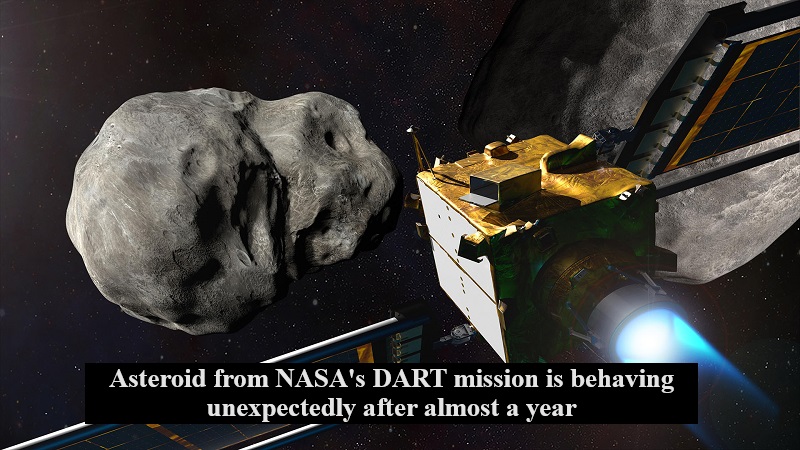
Almost a year has elapsed since NASA conducted a deliberate crash of a $300 million spacecraft into an asteroid. However, the asteroid is now exhibiting unexpected behavior.
In a unique experiment called the Double Asteroid Redirection Test (DART), NASA accelerated a spacecraft to a speed of 14,000 miles per hour and collided it with the space rock Dimorphos on September 26, 2022. Dimorphos orbits another asteroid known as Didymos. While neither of these objects posed a threat to Earth, the DART mission served as a demonstration of NASA’s ability to alter the trajectory of an asteroid by nudging it. This capability could be crucial in potential planetary defense scenarios.
The compact but powerful DART spacecraft successfully reduced Dimorphos’ orbital period by approximately 33 minutes. However, according to recent research, Dimorphos’ orbital period has been further reduced by a full minute compared to NASA’s calculations, as reported by New Scientist. This research was conducted by a high school teacher and his students from September to November 2022. Initially, the asteroid’s orbital period was 11 hours and 55 minutes, but it has now decreased by 34 minutes.
Jonathan Swift, a math and science teacher at the Thacher School who participated in the research, expressed that the discrepancy was uncomfortably significant. Despite their efforts to identify any errors in their calculations, the research team could not find any. They presented their findings at a meeting of the American Astronomical Society in New Mexico in June, receiving a positive response.
The unexpected behavior of Dimorphos does not pose a threat to Earth, but it offers valuable insights into asteroid deflection. Prior to the DART mission, no other mission had conducted a planetary defense test, making Dimorphos a unique real-world example for scientific study.
While the exact cause of Dimorphos’ unexpected behavior remains unknown, there are several theories. One theory proposes that Dimorphos was once tidally locked to Didymos, meaning that one side of the satellite always faced its host, similar to Earth’s moon. However, the DART mission may have altered its alignment, causing Dimorphos to tumble as the tidal forces within the system changed its orbit. If this theory is accurate, Dimorphos is expected to eventually return to a tidally locked state.
If the new study’s findings are confirmed, it wouldn’t be the first unintended consequence of NASA’s DART mission. Researchers have been studying the effects of the spacecraft’s collision with Dimorphos over the past year, gaining valuable insights into the behavior of asteroids.

Post Your Comments